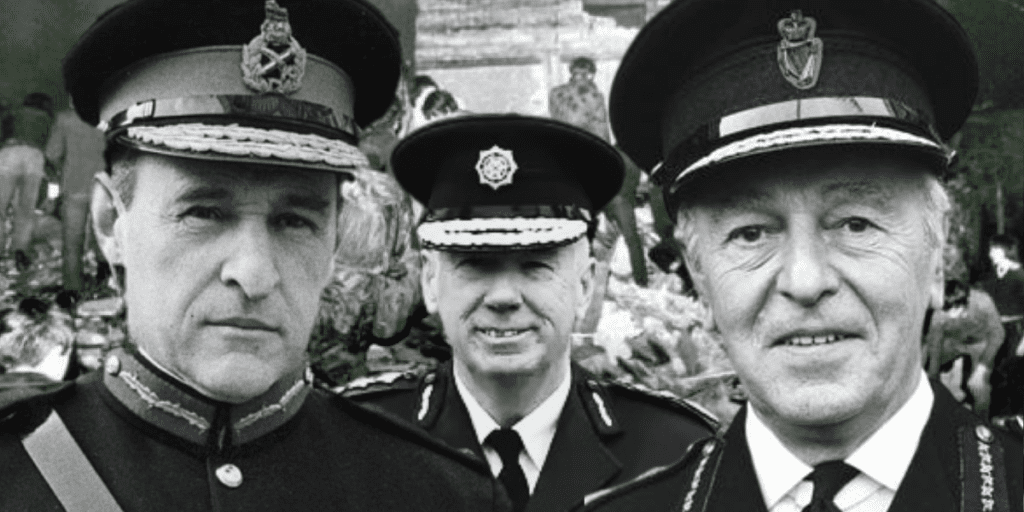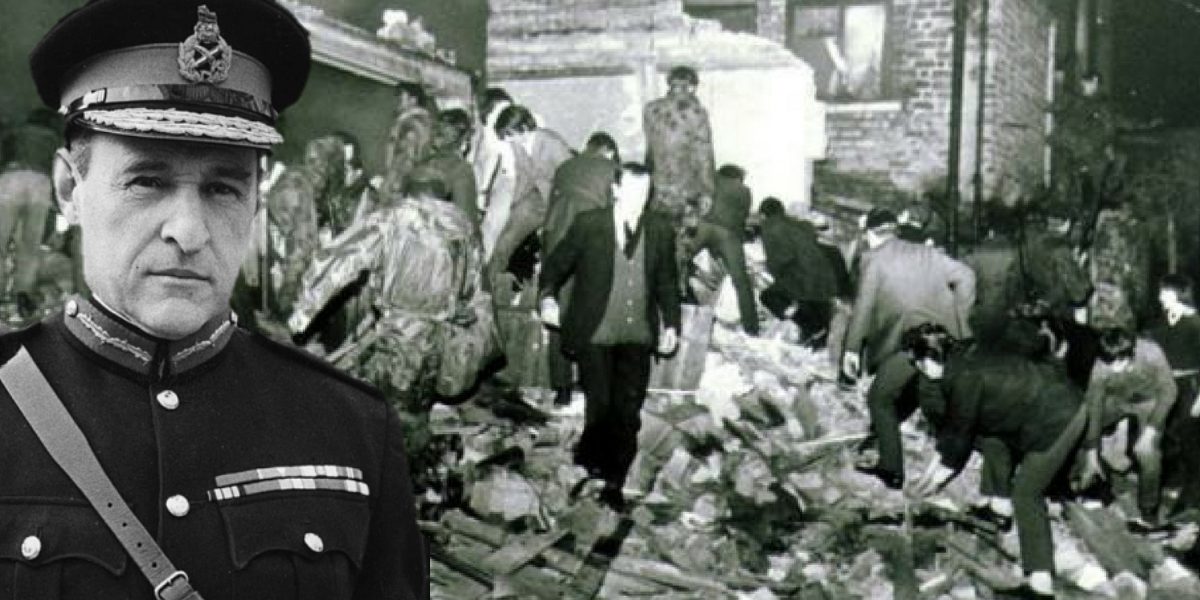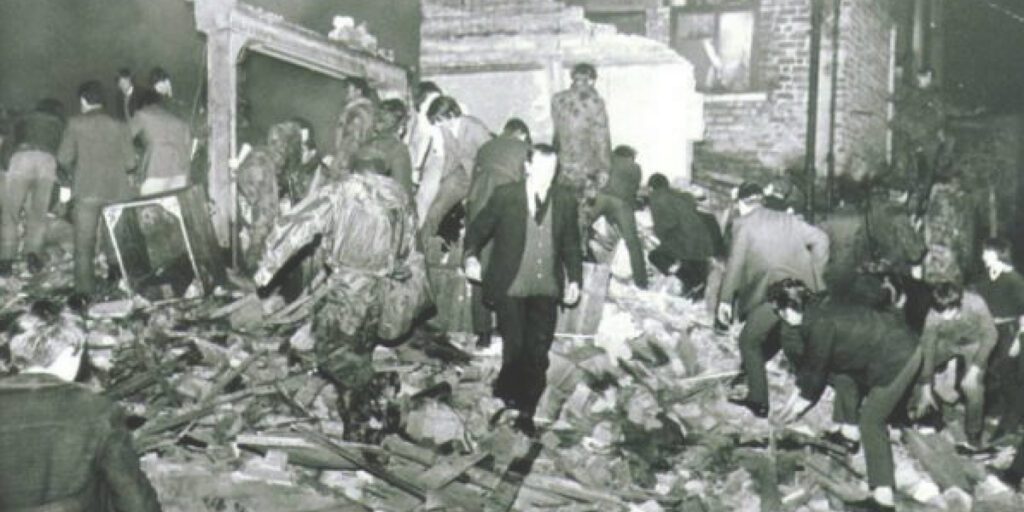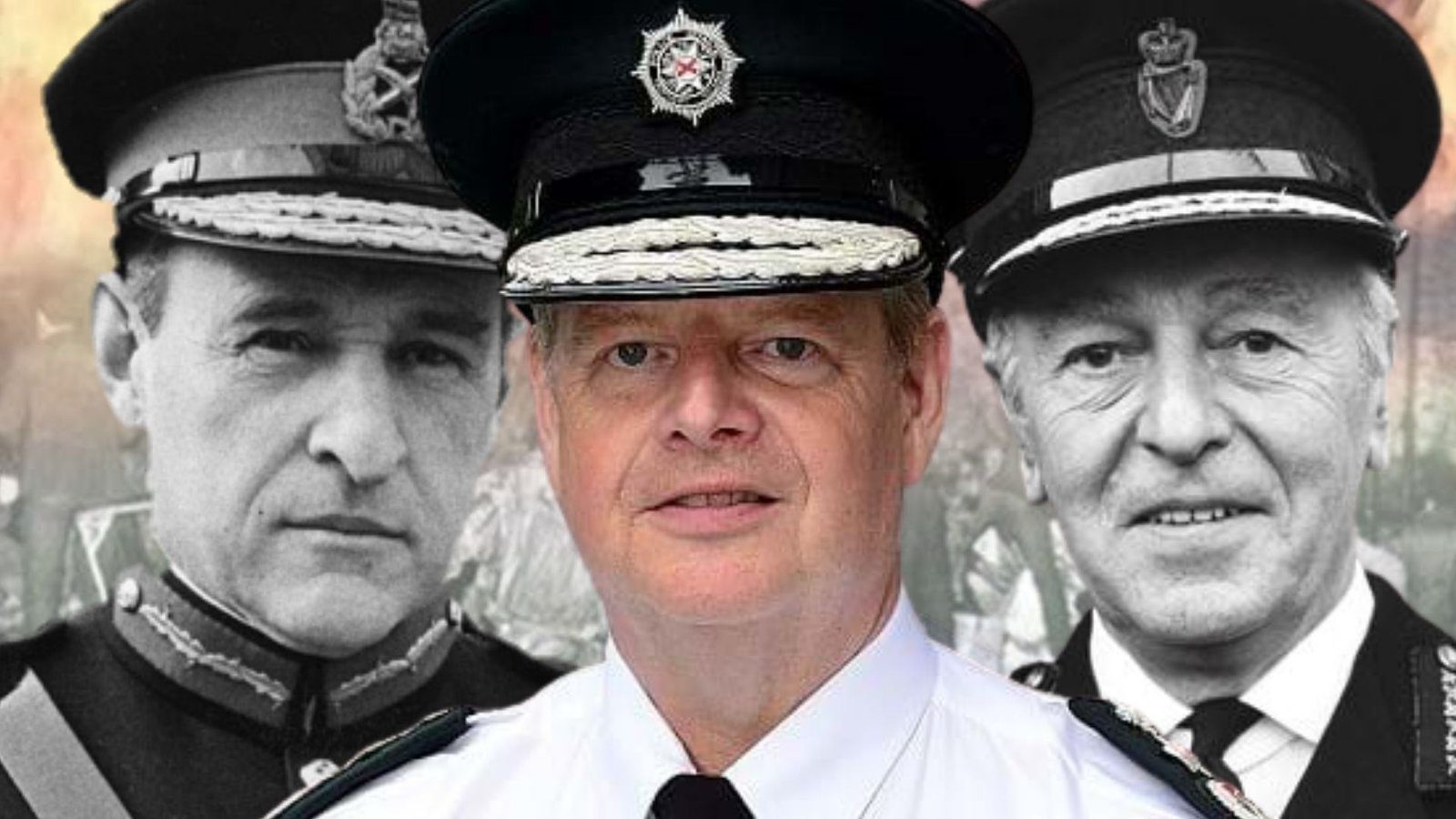It was the reasoned crisis of his soul
Against more days of inescapable thrall
S.I.W., Wilfred Owen
Official records tend to be dry, perfunctory and prosaic. Documents like Director of Operations Brief, Duty Officer Report or Brigade Intelligence Summary may catalogue moments of violence and destruction but the words rarely convey context or the impact on ordinary lives. The words may mean even less many years later unless they are read by those involved or those impacted by the events. Nevertheless, every now and again a simple line screams for a life lost and for a story untold:
“Fus. TG Thomas died of self-inflicted wounds in his living quarters at Girdwood Park camp”[1]
This was a War Diary entry by the 2nd Battalion of the British Army’s Royal Regiment of Fusiliers (2RRF) on Tuesday 25th January 1972[2] [access archive].
Why had I never heard or read of Fusilier Thomas’s death?
I have examined boxes of archives and trawled files relating to that particular time and part of north Belfast. My grandmother, Kathleen Irvine, was murdered along 14 other civilians – men, women and children – in McGurk’s Bar on 4th December 1971 so I have devoted much of my adult life to study of that period. I have researched the British Army unit positioned in the area too and not only because of what we know that they did that night.
Soldiers of C Company of 2RRF arrived at the devastating scene of the bombing and threw their weapons into the back of a PIG armoured vehicle before digging with their bare hands, shoulder-to-shoulder with the local residents. The soldiers’ swift actions that night, along with the actions of the people of the New Lodge and emergency services, meant that over a dozen lives were saved.
In my book I recount the experience of one of the victim’s young grandsons at his grandfather’s wake:
“Amid all this misery, there were flashes of humanity… Robert McClenaghan, then only 12 years of age, remembers a knock on the door of his grandparents’ Stanhope Drive home. Two young British soldiers from the 2nd Battalion Royal Regiment of Fusiliers stood there and asked if they may pay their respects. Robert remembers how well groomed they were and, of course, the shock of a red and white hackle[3] on their head. They took their soft berets off and came into the home. After engaging the family members politely, they stood with heads bowed and rifles upturned at Phil’s coffin in silence, paid their respects and left. Even though their headquarters were just around the corner in Glenravel, this was still a very brave and supremely human response that has not been forgotten by the family and Robert especially: ‘When you think how vicious and bad the conflict got… these two young soldiers were still trying to be human in the middle of it’.”[4]
Fusilier Thomas’s death immediately resonated with me and not simply because I wondered what drove this young soldier to kill himself.
The strains of being stationed in that part of Belfast amid a conflagration could undoubtedly take its toll but I wondered whether his death had also become entwined in the horror of the McGurk’s Bar massacre the month before. Had Fusilier Thomas been one of the British soldiers who had dug with their bare hands and dragged bodies from the rubble? Had he seen sights that night that he could not shake from his mind?
Of course I knew other causes could have made him feel there was no escape. He may have been bullied or he may have had a history of mental illness. “The mind…” as my other granny used to say, “is a fragile thing”. Perhaps, I thought, memory more fragile still.
His name was not in Lost Lives, the epic, humbling, literary monument to the men, women and children killed during the conflict. So, I visited the newspaper archives behind Belfast Central Library just on the off-chance I could find any mention of his death although I did not expect to as the researchers of Lost Lives would have already picked up on it and included it in their tome.
But no, scanning the pages I finally came across mention of his death and realised why it may not have been included in the book. In the Belfast Telegraph for the 26th January 1972, Fusilier Thomas’s death is indeed recorded – almost in passing – but the article tells us that he died in an accidental shooting, not that he committed suicide. In the British military, there is a great difference between self-inflicted wounds (SIW) and an accidental, mortal injury.
Nevertheless, this is how the British Army reported it and how it was accepted but the army’s own secret records tell a very different story. This though is an old story and very current still – the British Army continues to try to bury stories of mental illness amid its ranks, especially post traumatic stress disorder (PTSD), and suicide due to military experiences.
The British Army of today supposedly releases its losses to suicide but that is not the whole story, for these figures only record the number of deaths of serving soldiers. What about those soldiers who return home though and then feel that life is too difficult to face?
Toby Harnden in his exposé for Panorama, Broken By Battle, which was shown in July 2013, recorded that the British Army lost more serving soldiers (21) and veterans (29) to suicide in 2012 than it did to fighting the Taliban in Afghanistan during the same period (40 combat losses and 4 accidental).
I am lucky to be in with contact with English author, Ken Wharton. Ken’s books are an oral history based mainly on accounts from British soldiers. As an ex- British squaddie who served in the north of Ireland, Ken writes very much from that perspective – and unashamedly so. His books, as well as giving voice to these perspectives also commemorate the British soldiers who served and died here. I know that Ken tends to this long list of fallen with great diligence and the utmost respect so I contacted him about Fusilier Thomas’s death.
Ken had indeed a record of his death but only information that he had died by “by violent or unnatural causes”. In fact, he had not got information of Fusilier Thomas’s Battalion so we were able to fill in this and his cause of death as recorded by 2RRF’s War Diary.
As I discovered from Ken too, Fusilier Thomas’s personal story is but one of many hundreds of stories yet to be told.
Official figures for the number of British Army dead during Operation Banner are that 763 British soldiers died in violent confrontations during active service here. Nevertheless, Ken’s list accounts for 1334 souls. This includes 217 deaths by road traffic accident, 54 violent or unnatural causes (including Fusilier Thomas), 60 accidental and 129 unknown causes of death. This accounts for 460 soldiers although Ken’s very personal Roll of Honour also includes over 5 dozen former members of UDR and nearly 3 dozen close family members and civilian workers. This total is equivalent to twice more than were killed in active service during the Falklands conflict.
The 460 deaths of serving British soldiers alone accounts for 60% more than official figures.
Of these horrific figures, Ken is aware of over 70 suicides which in turn is equivalent to about 10% on top of Britain’s official killed-in-action figures. Think about that for a moment.
These startling figures and the disparity with official numbers resonate all the more because hundreds of British men and women have been expunged from the record and forgotten by all except those who loved them.
Regardless of our background, creed or political belief, this is a disgrace. I asked Ken how he, his comrades and their families felt about this grave disparity.
“How do we feel about the lack of recognition for our fallen – all 1,334 of them – and the fact that we appear to be forgotten soldiers in a forgotten war? Angry, bitter, disappointed; we feel that to a man.”
If you think that these figures should not be included along with those killed in action, ask yourself whether these people would have died had they not been here. Would 20 year old Fusilier Terry Thomas have taken his own life?
One dawn, our wire patrol
Carried him. This time, Death had not missed.
We could do nothing but wipe his bleeding cough.
Could it be accident? – Rifles go off…
Not sniped? No. (Later they found the English ball.)
It was the reasoned crisis of his soul
Against more days of inescapable thrall,
Against infrangibly wired and blind trench wall
Curtained with fire, roofed in with creeping fire,
Slow grazing fire, that would not burn him whole
But kept him for death’s promises and scoff,
And life’s half-promising, and both their riling.
With him they buried the muzzle his teeth had kissed,
And truthfully wrote the mother, ‘Tim died smiling.’
S.I.W., Wilfred Owen
Fusilier Terry Thomas from Norwich, England, was born on 5th November 1951 and died on 25th January 1972 in Belfast. Today is the 42nd anniversary of his death. He is as much a victim of our war and should be recognised as such.
Read the Belfast Telegraph article from 26th January 1972 here
[1] He is recorded as Terry Neil Thomas in the newspaper clipping below.
[2] WO 305/4277
[3] Hackles are the plumes that some regiments of the British Army wear on a beret. 2RRF’s hackle is red and white.
[4] The McGurk’s Bar Bombing: Collusion, Cover-Up and a Campaign for Truth, page 30




